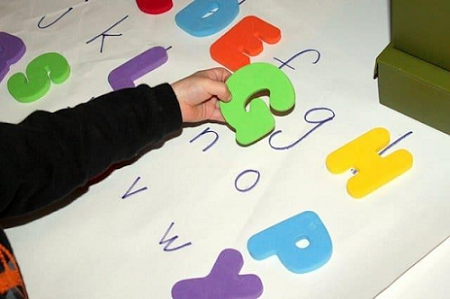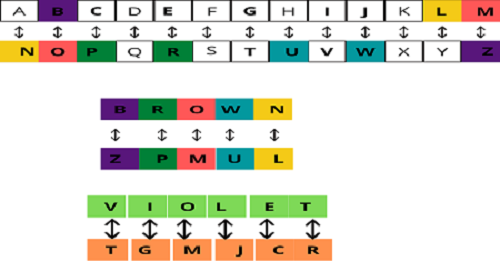Table of Contents
| 1. | What is Coding and Decoding? |
| 2. | Types of Coding and Decoding |
| 3. | Miscellaneous examples for coding-decoding |
| 4. | Conclusion |
| 5. | FAQs on Coding-Decoding |
23 December 2020
Reading Time: 4 minutes
What is coding and decoding?
What are the different types?
Reading is the key skill for the learning process of, ability to letter-sound relationships to pronounce the written words. In reality, the children will usually express their frustration and difficulties in a general way, with statements like “I hate reading”. Coding-Decoding is essential to reading, it allows kids to figure out most words and Coding-Decoding is the foundation of reading instructions like fluency, vocabulary, reading comprehension, phonics, and phonemic to words.
Coding-Decoding helps the children to give knowledge of letter-sound relationships, and successfully recognize familiar words quickly and figure out words.

Coding-Decoding
Coding is a process used to encrypt a word, a number in a particular code or pattern based on some set of rules. Decoding is a process to decrypt the pattern into its original form from the given codes. Coding is, therefore, a method of transmitting a message between sender and receiver which cannot be understood or comprehended by a third person. The Coding and Decoding test is mainly to judge the test-taker's ability to decipher a particular word/message by breaking the code or decoding the same.
Coding-Decoding Is mentioned below in the Downloadable PDF.
| 📥 | Coding-Decoding |
What is Coding and Decoding?
- Coding is a process used to encrypt a word, a number in a particular code or pattern based on some set of rules. Hence Coding is the process of sending data from one person to another person in such a way that only the sender and receiver can understand the meaning without letting anyone else know the meaning of it.
- Decoding is a process to decrypt the pattern into its original form from the given codes.
- Coding-Decoding is a system of signals to transmit the information in the form of signals or code without it being known to a third party.

- Coding decoding concepts can work in our real life.
For example, if you notice that your kid can learn their letter sounds in kindergarten it means what sound to make when the letter is written on the board. The kid progresses to identify the constant vowel words, which helps to read loudly such as cat, dog, sun.
Kids will move to learn decoding words with consonant clusters, such as st, tr, cr, sk kids will learn to identify the words easily and kids is to phonics the words and phoneme to the words easily.


Types of Coding and Decoding
Letter Coding
Letter coding-decoding in which the letter of words is replaced by certain other letters according to specific patterns/rules to form a code.
Example for Letter coding-decoding.
Detect the coding pattern /rule and answer the question below.
If BROWN is written as ‘ZPMUL’, then VIOLET is coded as
- TGMJCR
- SGMJCQ
- TGMJCQ
- TGWCQ
Answer: In this question, the alphabet is replaced with another alphabet with some directions. The first letter B is coded as Z means that it moves backward with 1 letter similarly R is coded as P, O is coded as M,W is coded as U, and N is coded as L. So VIOLET is coded as TGMJCR.

| VIOLET is coded as TGMJCR |
Number coding-decoding in which either the numerical code values are assigned to a word or alphabetical code letters are assigned to the numbers.
Example for Number/Symbol coding-decoding.
If CHAIR is written as ‘12345’, RENT is written as ‘5678’, and then REAR is written as.
- 5635
- 5356
- 5365
- 5653
Answer:

In this question each alphabet is coded as a number. So that CHAIR is coded as 12345 and RENT is coded as 5678 and the REAR is coded as 5635.
| REAR is coded as 5635 |
Substitution coding-decoding in which some particular words are assigned with certain substituted names.
Example for Substitution coding-decoding.
If a dog is called “cat”, cat is called “lion”, lion is called “rat”, then which of these lives in a forest?
- Rat
- Lion
- Dog
- Cat
Answer: In this question, lion lives in the forest but lion is called a rat so rat lives in a forest is the answer.
| Rat lives in a forest |
Miscellaneous examples for coding-decoding
Question 1: If the desk is called "chair", chair is called "blackboard", blackboard is called "duster", duster is called "chalk", and then where do you sit in the classroom?
- Blackboard
- Chair
- Desk
- Duster
Answer: In this question, we clearly know that in the classroom we sit on a chair.And as the chair is called a blackboard, the answer is blackboard.
| Well, according to this problem you sit on a blackboard! |
Question 2: If cake is called “egg”, if egg is called “coffee”, coffee is called “tea”, then which is white in colour?
- Cake
- Egg
- Coffee
- Tea
Answer: Egg is of white colour.But egg is called coffee so coffee is the answer.
| Coffee is white in colour from the above statement |
Question 3: If January is called “March”, March is called “April” and April is called “May”, then which of the following months will have only 30 days?
- January
- March
- April
- May
Answer: January, March and May have 31days and April has 30 days.But April is called May so the answer is May.
| May will have 30 days from the above problem statement |
Question 4: If NECK is written as '123%', LUCK is written as '+@3%' and LIKE is written as '+÷%2', then NICE is written as
- 1%÷3
- 1÷32
- 1÷@2
- ÷13+
Answer: NECK is written as '123%', LUCK is written as '+@3%' and LIKE is written as '+÷%2', then NICE so N is coded as 1 and I is coded as ÷ and C is coded as 3 and E is coded as 2 so answer is 1÷32.
| NICE is written as 1÷32 |
Question 5: If MEDICO is written as 'PBGFFL', then DOCTOR is coded as
- GLFQRO
- GLFQLR
- GLFQLS
- GRFWLQ
Answer: The letter MEDICO is coded as PBGFFL and the letter M is moved forward by two letters and is coded as P, E is moved backward by two letters and is coded as B, D is moved forward by two letters and is coded as G, I is moved backward by two letters and is coded as F, C is moved forward by two letters and is coded as F, O is moved backward by two letters and is coded as L. So DOCTOR is coded as GLFQRO.
| DOCTOR is coded GLFQRO |
Question 6:

Answer: The circle has infinite lines of symmetry but, circle means rectangle so the answer is rectangle.
| Answer: Rectangle |
Conclusion
Coding-decoding covers all aspects of learning, focuses on improving children’s logical reasoning skills, and children's ability to identify individual sounds that makeup words. Coding-decoding helps the children to improve their fluency, vocabulary, comprehension and to phonemic words.
Coding-decoding helps to learn about how communication happens, Types of coding-decoding, learn to match the pattern with numbers, symbols, and letters. Coding decoding is the reasoning booster to improve reading skills and comprehension.
Make sure you practice regularly to master the concept, and maximize your efficiency. Get better at math with us, sign-up for a free trial.
About Cuemath
Cuemath, a student-friendly mathematics and coding platform, conducts regular Online Classes for academics and skill-development, and their Mental Math App, on both iOS and Android, is a one-stop solution for kids to develop multiple skills. Understand the Cuemath fee structure and sign-up for a free trial.
FAQs on Coding-Decoding
What is coding-decoding?
Logical reasoning in most aptitude tests have a section on coding-decoding. It refers to encryption and decryption of a particular code to different forms.
What are decoding skills?
Decoding is known as the capability to apply known information of letter-sound relationships, including knowledge of letter patterns, to pronounce written words correctly. Children gain the potential to recognize familiar words quickly and understand words they haven't seen before.